The Early Legacy of the Green Bay Packers

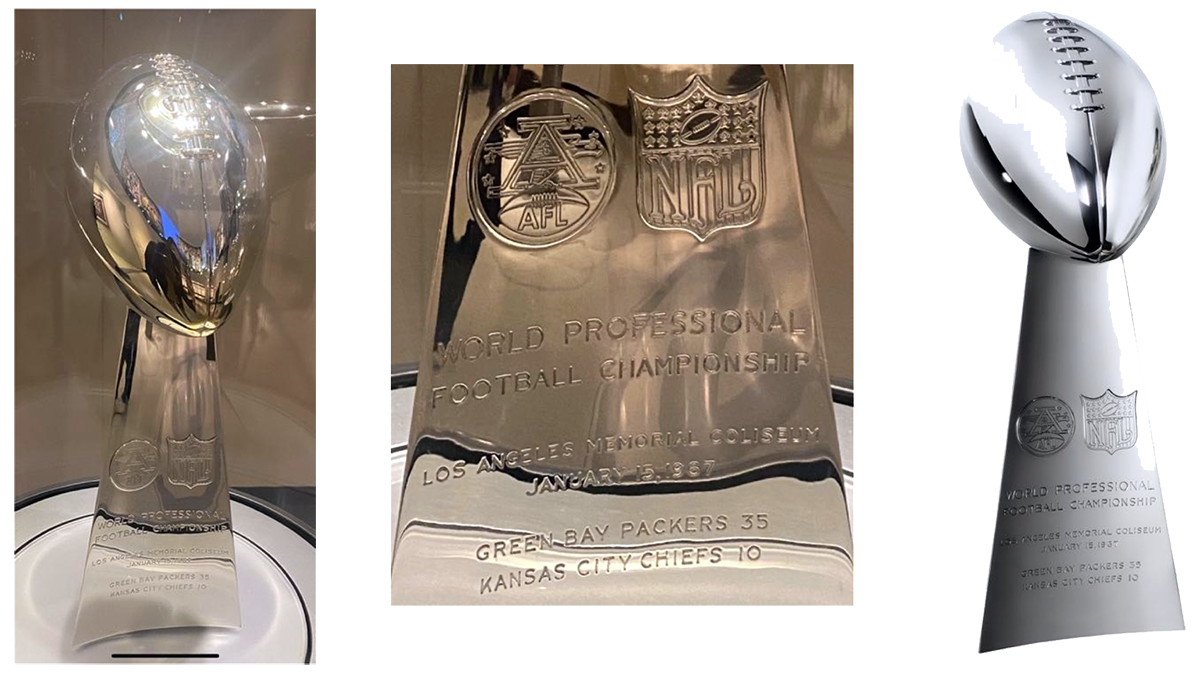
Lombardi Trophies
The Early Legacy of the Green Bay Packers
The Green Bay Packers Hall of Fame is home to four championship trophies, one of which was awarded to the team in 1967 after they defeated the Kansas City Chiefs 35-10 in the first Super Bowl game. Standing at 22 inches tall, this sterling silver trophy is on public display for all fans to share in the team’s success. The early journey of the Green Bay Packers to being awarded the first “World Professional Football Championship Trophy” was one filled with hardships and triumphs. |

| The four Super Bowl trophies on display in the Championship Gallery at the Packers Hall of Fame |

The Curly Lambeau Era
In 1919, Earl “Curly” Lambeau, an employee of Indian Packing Company, decided that he wanted to start a professional football team in the small town of Green Bay, Wisconsin. Since Lambeau needed financial support in order to do so, he turned to his employer and convinced them to sponsor the team. With financial support from the meatpacking facility, Lambeau and his high school rival, George W. “Cal” Calhoun, were able to recruit professional football players through the Green Bay Press Gazette, a local Wisconsin newspaper. Later, in 1921, as a result of the sale of Indian Packing to Acme Packing, the team joined the American Professional Football Association as the “Acme Packers.” Soon after, the Acme Packers would become the Green Bay Packers, the name we recognize today. In these early years as a franchise, the Packers experienced economic hardships, low game attendance, roster shortages, and even disenfranchisement. However, the team was able to overcome many of these difficulties and begin to build a well-respected franchise. This early success was highly attributable to the help and the dedication of players and coaches such as Lambeau, who the stadium would later become named after in 1965. |
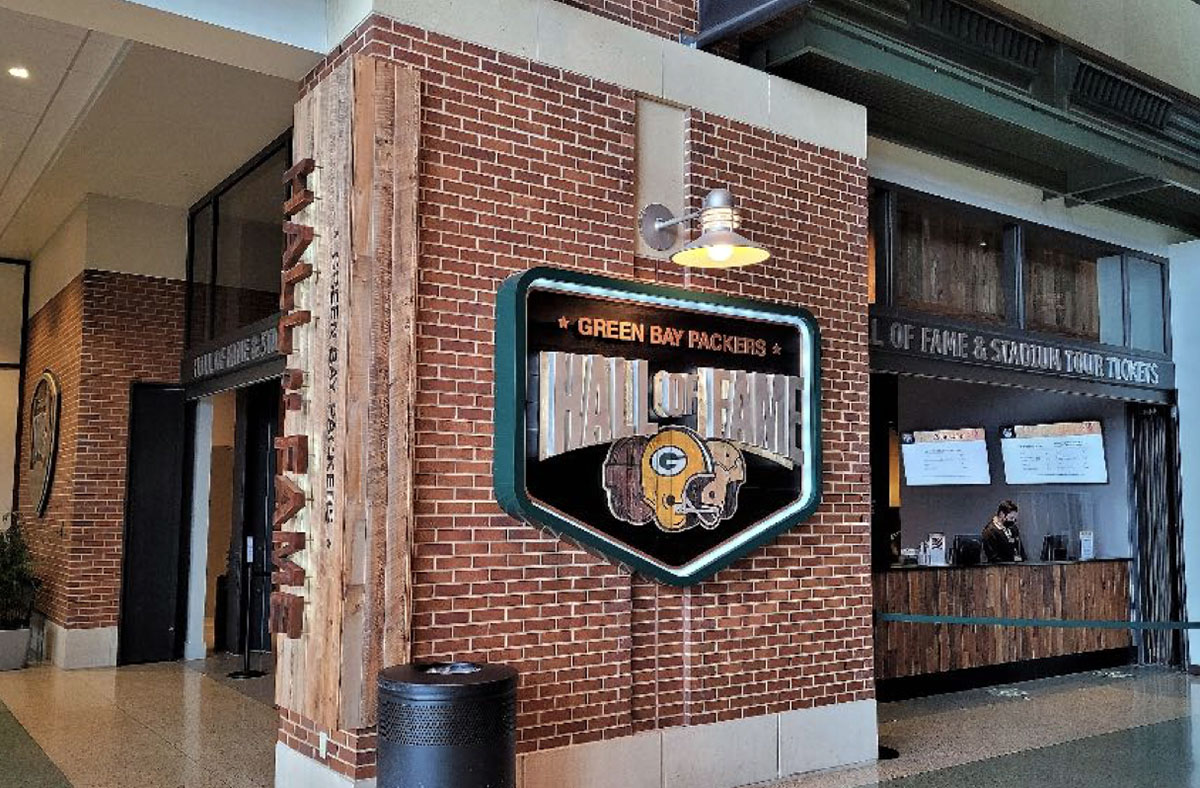
Entrance
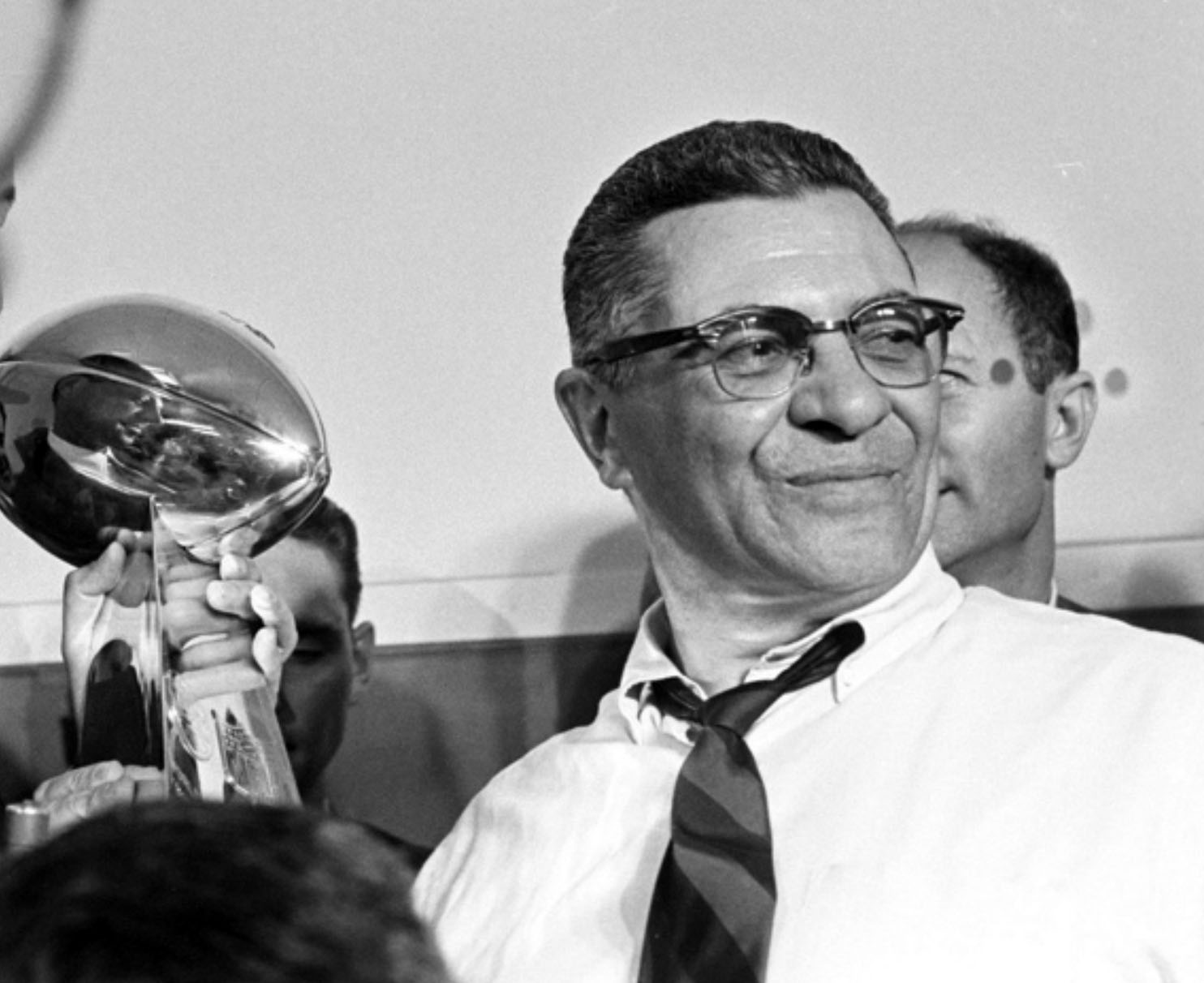
[Photo from Vernon J. Biever Photography, LLC] |
The Vince Lombardi Era
Another man who continued to build the successful franchise of the Green Bay Packers was Vince Lombardi. On January 28, 1959, Lombardi accepted the position of head coach and general manager of the Green Bay Packers. When he accepted this position, the team had just experienced their worst season ever with a 1-10-1 finish. Despite this, in his first year with the Packers, Lombardi finished 7-5 and was named Coach of the Year. During his time as head coach of the Packers, he never experienced a losing season and won a total of 5 championships, one of which was Super Bowl I. The first Super Bowl game took place on January 15, 1967 at the Los Angeles Coliseum and was a showdown between the Green Bay Packers of the NFL and the Kansas City Chiefs of the AFL. The Packers, led by coach Lombardi and quarterback Bart Starr, defeated the Chiefs 35-10 and were awarded the first “World Professional Football Championship Trophy” which is now on display in the Packers Hall of Fame. |
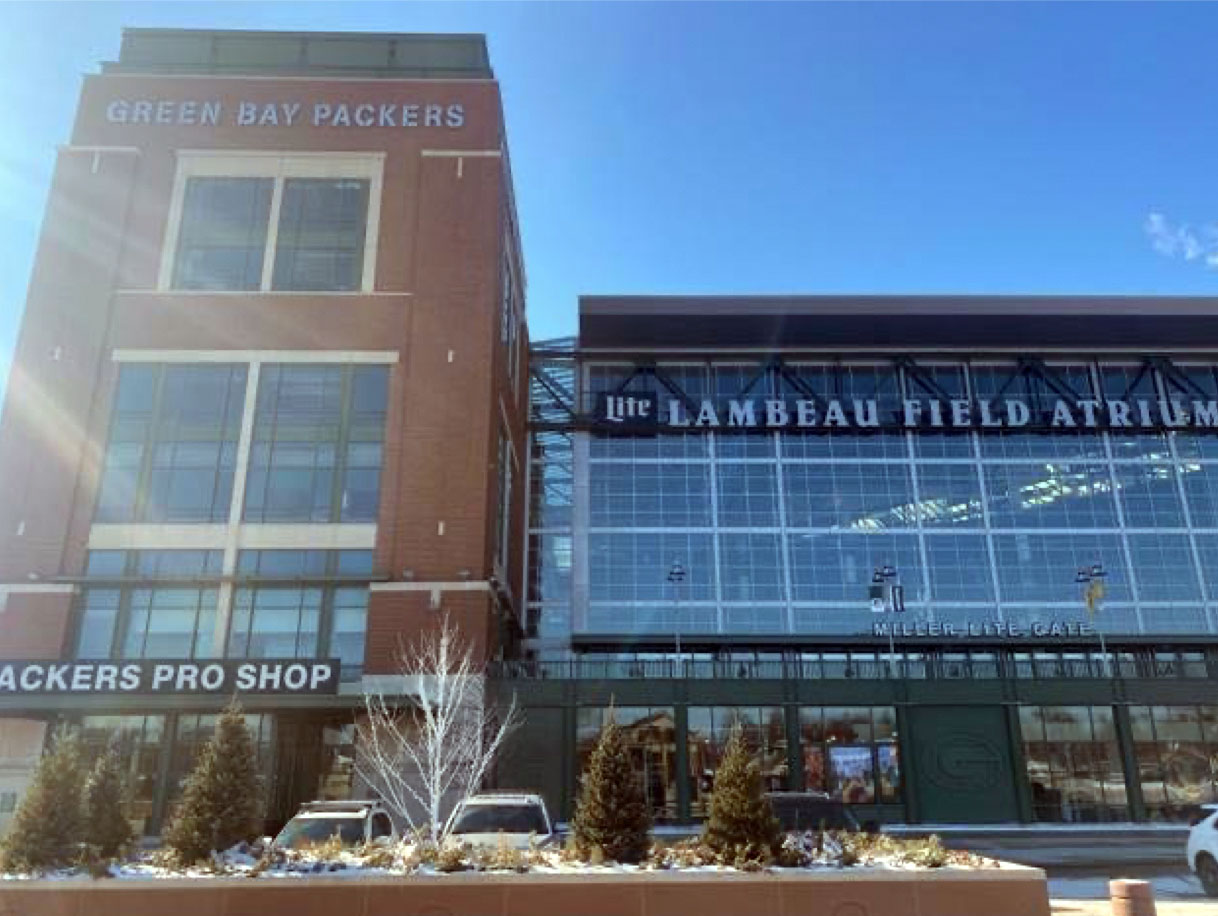
Lambeau Field Atrium Entrance; home of the Hall of Fame
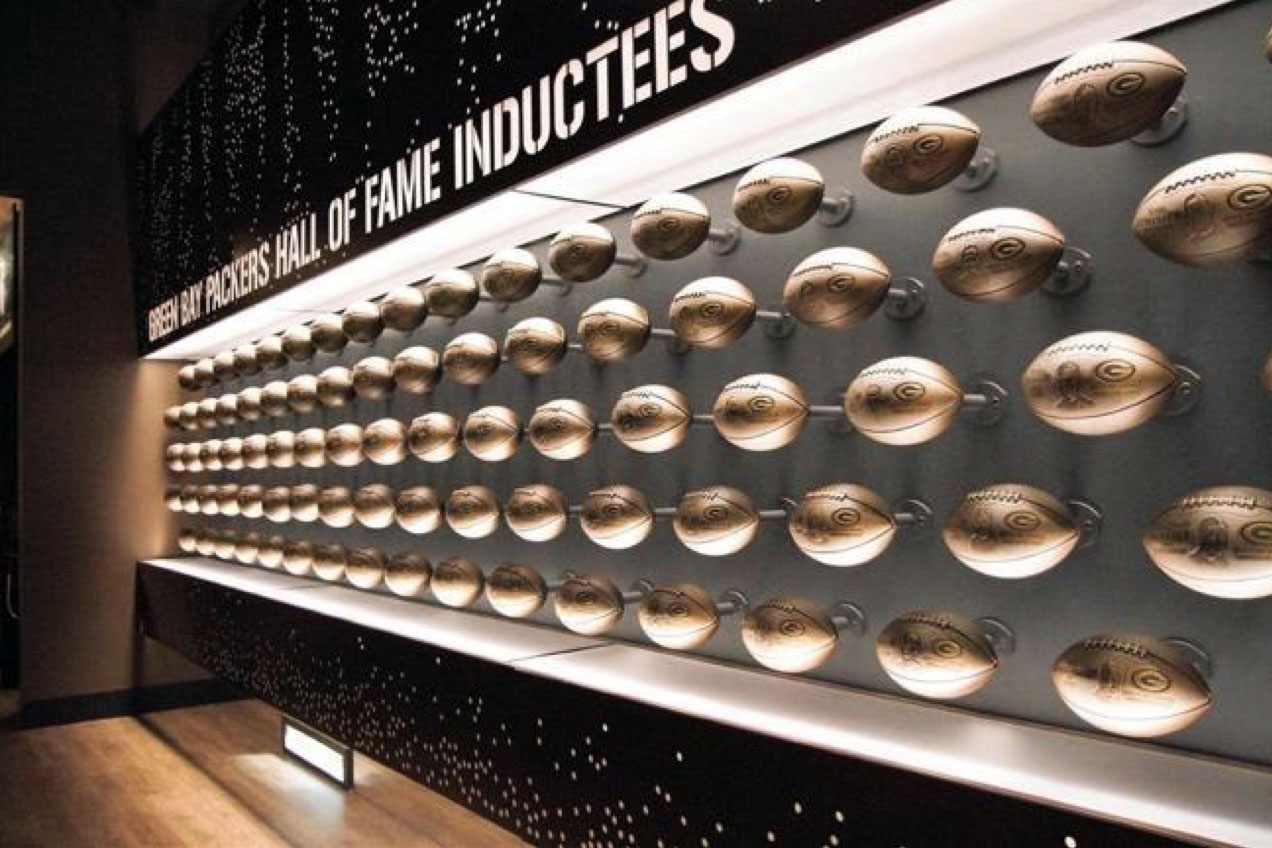
Green Bay Packers Hall of Fame inductee bronze footballs
The Green Bay Packers Hall of Fame Today
The Green Bay Packers, the only publicly owned football team in the NFL, are truly a people’s team – a team that has created an identity for Wisconsinites to celebrate and to be proud of. Although the Packers are based in the smallest city to have a major sports team, they were the first professional football team to have a Hall of Fame solely recognizing them. Therefore, the Hall of Fame serves as a place for the Green Bay community and sports community to celebrate and to share in the team’s history. If you consider yourself a cheesehead or are interested in learning more about the team, a visit to the Packers Hall of Fame is an absolute must! |
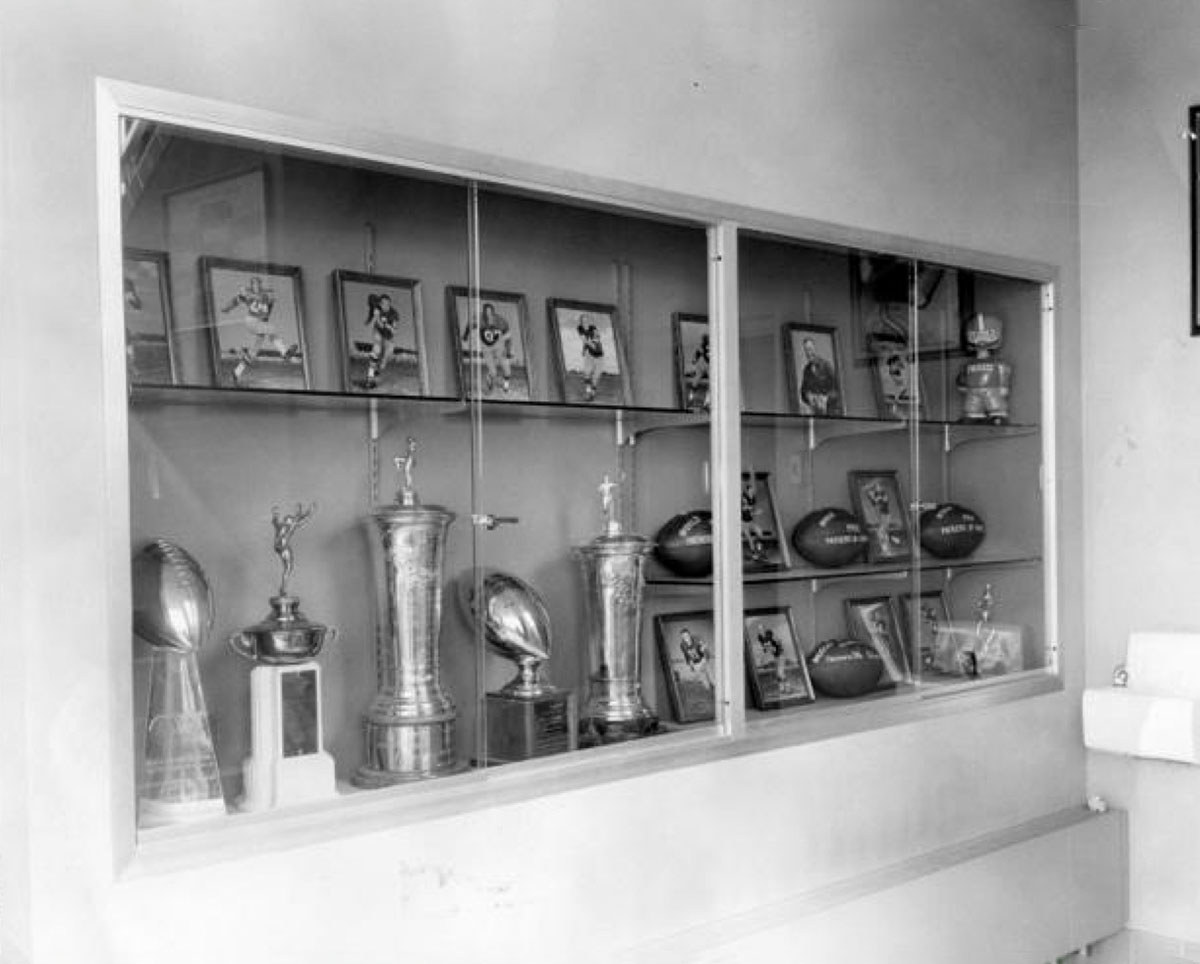
Timeline
|
Wisconsin Life: Packers Hall of Fame
Why I choose this object?
|

Madison Polack
contact
History 401 [Spring 2022]
Leslie A. Bellais
contact

